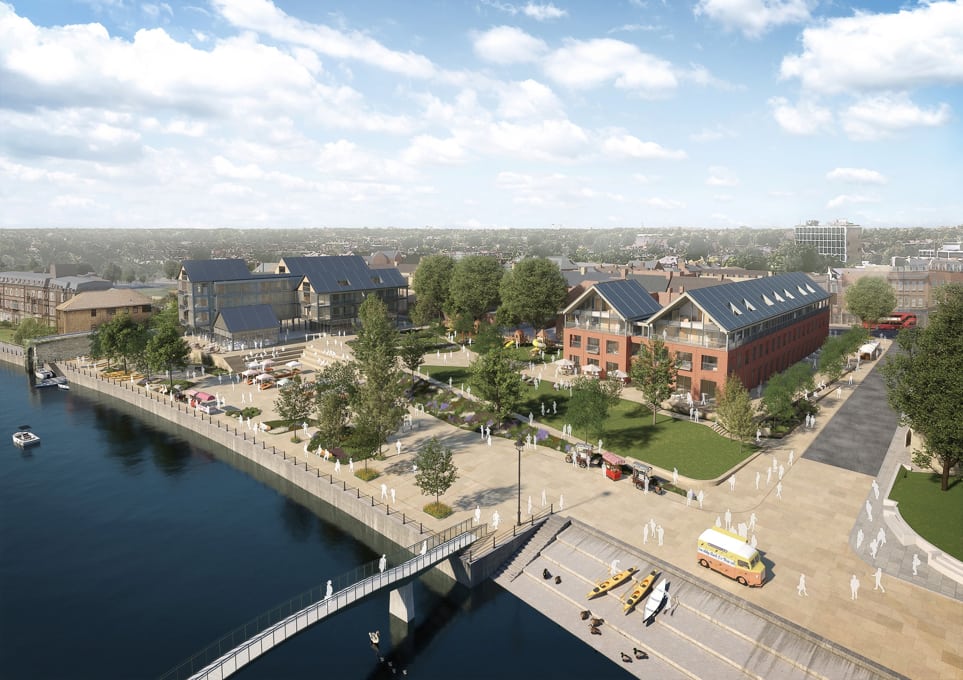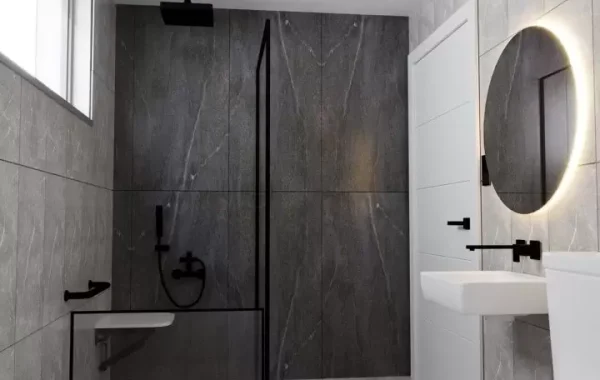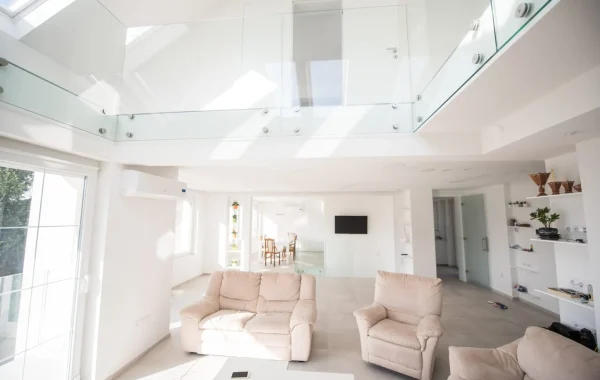Stay Compliant with Richmond West Twickenham Building Regulations: A Step-by-Step Guide for Your Project
Richmond West Twickenham, nestled within the beautiful London Borough of Richmond upon Thames, is known for its scenic views, historic architecture, and vibrant community. Whether you are a homeowner looking to improve your property, a developer embarking on a new construction project, or simply seeking to understand the local building standards, understanding Richmond West Twickenham building regulations is a crucial first step. This comprehensive guide delves into everything you need to know about building regulations in the area, ensuring that your project complies with legal requirements and achieves the highest safety and environmental standards.
What Are Building Regulations?
Building regulations are a set of minimum standards for design, construction, and alterations to buildings. They cover aspects such as structure, fire safety, accessibility, energy efficiency, and overall building safety. These regulations are enforced to ensure that all buildings are safe, healthy, and sustainable for their occupants. In Richmond West Twickenham, like the rest of the UK, these regulations are governed by the Building Act 1984 and are overseen by the local council, Richmond upon Thames Borough Council.
Why Are Building Regulations Important in Richmond West Twickenham?
Richmond West Twickenham is a highly sought-after area that combines a wealth of heritage with modern living. As a result, property developments in this region are subject to strict planning and building regulations. Whether you are planning a small extension to your home, converting your loft, or constructing a new build property, adhering to building regulations is essential to ensure the safety of your home, comply with local planning guidelines, and avoid potential fines or legal issues.
Key Reasons to Comply with Building Regulations
- Safety: Building regulations are designed to ensure the structural integrity of buildings and protect residents from potential hazards such as fire, flooding, and unsafe construction methods.
- Legal Compliance: Failure to comply with building regulations can lead to penalties, fines, or even demolition orders for non-compliant structures.
- Property Value: Ensuring that your project adheres to building regulations can enhance your property’s value, making it more attractive to potential buyers or investors.
- Environmental Efficiency: Regulations often include provisions for energy efficiency, which can help reduce your energy bills and your home’s carbon footprint.
Richmond West Twickenham Building Regulations: What You Need to Know
Understanding the specific building regulations for Richmond West Twickenham is essential for successfully carrying out any construction or renovation project. The following are key aspects of building regulations in the area:
1. Planning Permission vs. Building Regulations Approval
While planning permission and building regulations approval are often confused, they are two distinct processes:
Planning Permission: Required when you want to change the use of a building, make significant alterations, or add to your property’s size. Planning permission is more concerned with the aesthetics and the impact of the development on the surrounding area.
Building Regulations Approval: This is required for the technical aspects of the construction, including structural safety, fire resistance, electrical installations, and plumbing systems. Building regulations ensure that the construction methods and materials used are safe and compliant with health and safety laws.
In Richmond West Twickenham, both planning permission and building regulations must be obtained for most significant building projects. The Richmond upon Thames Borough Council’s planning department can guide you through these processes.
2. Common Projects and Building Regulations in Richmond West Twickenham
Below are common home improvement projects and the key building regulations that apply to them in Richmond West Twickenham:
Home Extensions
Building an extension, whether it’s single-storey or double-storey, requires building regulations approval. Key considerations include:
- Structural Safety: Ensuring the extension’s foundations are secure and capable of supporting the additional weight.
- Thermal Insulation: Extensions must meet energy efficiency standards to reduce the building’s environmental impact.
- Fire Safety: Regulations for fire doors, escape routes, and smoke alarms must be adhered to.
Loft Conversions
Converting your loft into a living space can significantly increase the value of your home. However, a loft conversion must meet the following regulations:
- Head Height: The roof space must meet specific height requirements to ensure it’s suitable for habitation.
- Staircases and Escape Routes: A safe and functional staircase must be built to allow access to the loft and meet fire safety standards.
- Structural Integrity: The existing roof structure must be assessed to ensure it can safely bear the additional load of the conversion.
New Builds
Building a new home or property in Richmond West Twickenham requires extensive knowledge of building regulations. A new build project will need to comply with:
- Energy Efficiency Standards: New builds are required to adhere to strict energy performance regulations, including insulation, double glazing, and heating systems.
- Accessibility: New homes must be built with accessibility in mind, ensuring that the design accommodates future-proofed accessibility features for those with disabilities.
- Sustainability: New homes are encouraged to incorporate green building practices, such as rainwater harvesting and solar panel installations, to help meet environmental goals.
Conservation Areas and Listed Buildings
Richmond West Twickenham is home to several conservation areas and listed buildings. When carrying out any building works on properties in these areas, stricter regulations may apply. Key considerations include:
- Preservation of Historic Features: Listed buildings must retain their historic value, so any alterations must be carefully managed to avoid damaging original features.
- Conservation Area Guidelines: If your property lies within a designated conservation area, planning authorities may impose restrictions on certain types of developments to maintain the area’s character.
3. The Building Regulations Approval Process
The process of obtaining building regulations approval involves the following steps:
- Initial Consultation: Before starting your project, it’s advisable to consult with an architect, builder, or building regulations specialist to understand what is required.
- Submitting Plans: Submit detailed plans for your proposed project to the Richmond upon Thames Building Control department. These plans should clearly indicate the structure, layout, and materials to be used.
- Building Control Approval: Once your plans are reviewed, you will receive approval or feedback. If the plans meet all regulatory standards, approval will be granted. If not, revisions will be required.
- Site Inspections: During construction, building control officers will carry out inspections to ensure that the work complies with approved plans and regulations.
- Completion Certificate: After the project is finished, a final inspection will confirm whether it meets all building regulations. If it passes, you will receive a completion certificate.
Richmond West Twickenham Building Regulations and Sustainability
In line with growing environmental concerns, Richmond West Twickenham’s building regulations increasingly focus on sustainability. Key regulations in this regard include:
- Energy Efficiency: New buildings and major renovations must comply with the latest energy performance standards, including the installation of insulation, double glazing, and energy-efficient heating systems.
- Flood Risk: Properties near the River Thames or areas susceptible to flooding may need to include flood prevention measures as part of their construction.
- Sustainable Building Materials: The use of sustainable, recycled, or eco-friendly materials is encouraged in both residential and commercial developments.
Conclusion
Complying with Richmond West Twickenham’s building regulations is crucial for ensuring that your project is safe, legal, and sustainable. Whether you are planning an extension, a loft conversion, or a new build, adhering to these regulations not only ensures the safety and integrity of your property but also helps protect the character of this beautiful and historic area. By understanding and following the necessary steps, you can confidently move forward with your building project and create a home that is both functional and compliant with local and national standards.





